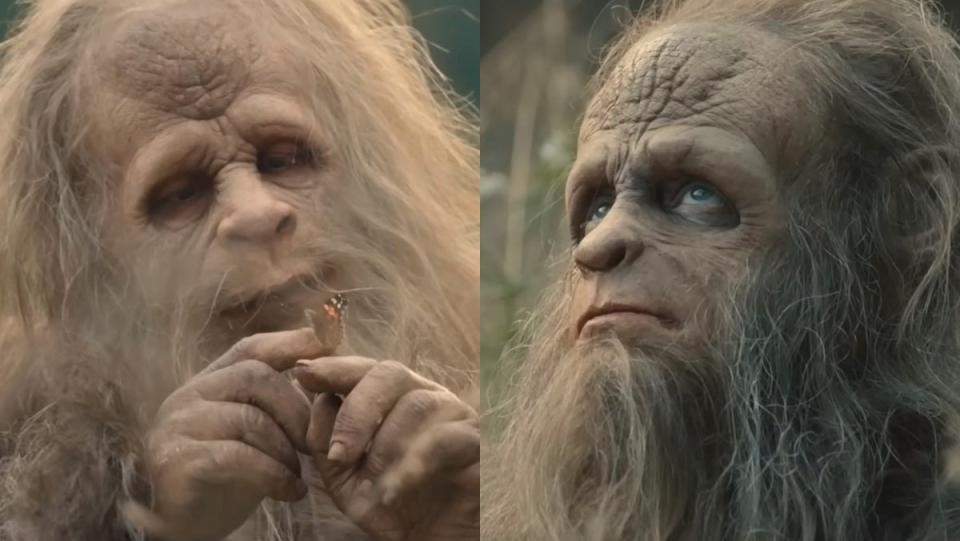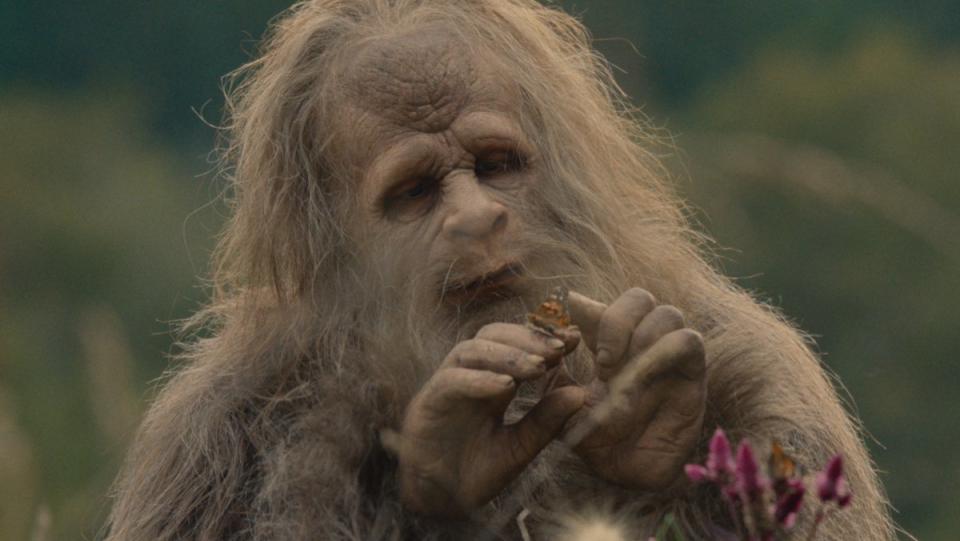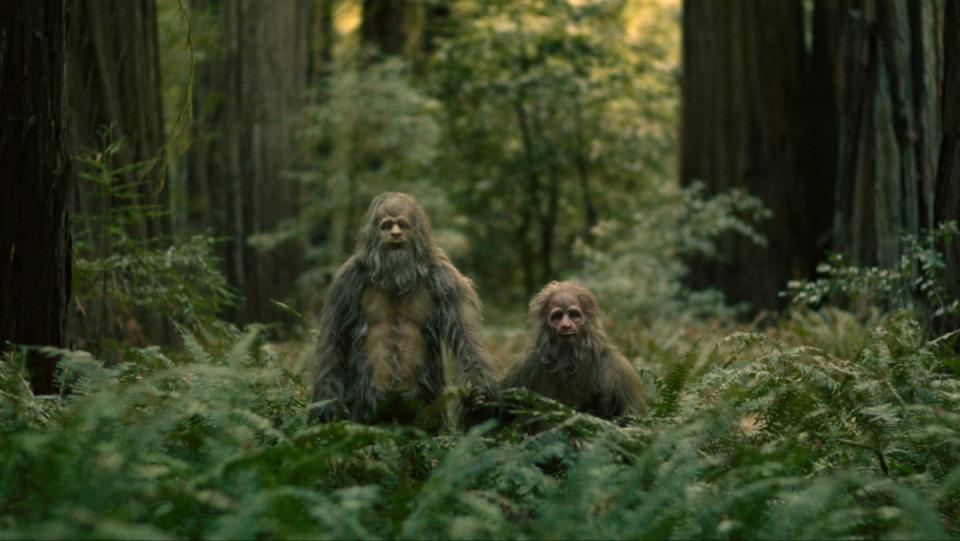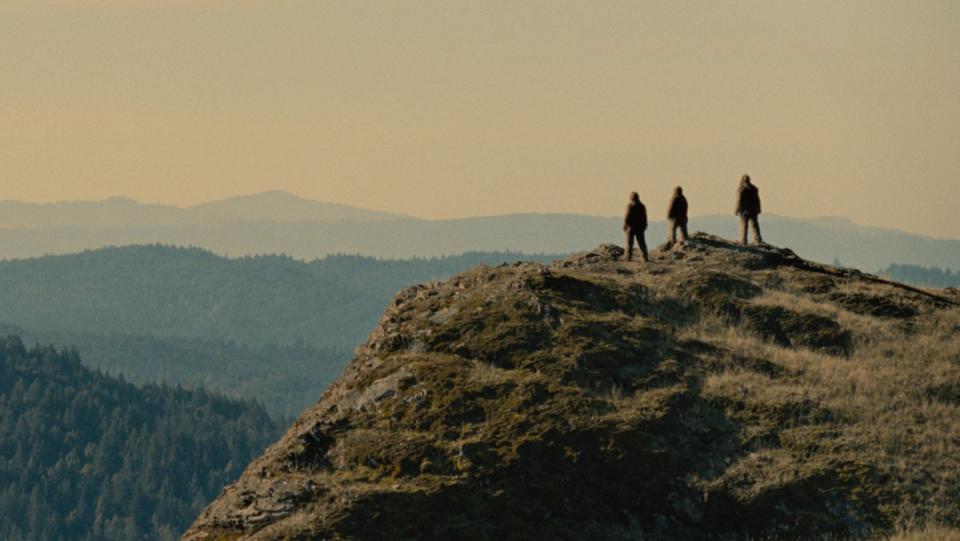SASQUATCH SUNSET Is the Most Accurate Bigfoot Movie Ever
- Oops!Something went wrong.Please try again later.
- Oops!Something went wrong.Please try again later.
- Oops!Something went wrong.Please try again later.
Recently, Nerdist was excited to attend the New York premiere of Sasquatch Sunset, a truly one-of-a-kind movie that features no human characters or spoken language at all. Instead, the movie tells its tale from the perspective of a Sasquatch family navigating life as they understand it. While the movie centers on these mythical beings, it also aims to capture the human experience.

At the premiere of Sasquatch Sunset, filmmakers David Zellner and Nathan Zellner and cast members Jesse Eisenberg and Christophe Zajac-Denek dove deep into the inception, creation, and execution of the film. Kicking things off, David Zellner spoke about how Sasquatch Sunset came to be. He noted that initially, he viewed the movie as a cathartic exercise never meant to see daylight, but it quickly became something more.
Zellner shared of Sasquatch Sunset, “I wrote it in a fever dream. It happened quick. It was the most joyous writing experience I’ve had. If someone was watching me, I would have looked like a madman, just because I was cackling to myself. It was a great cathartic thing to do when some other projects had been on hold. But then, we couldn’t let go of it. We knew it was a more challenging film to get off the ground than the other ones, but we kept kind of circling back. We’ve been obsessed with Bigfoot since we were kids. And Jesse [Eisenberg], we’ve known for almost 20 years, and kind of sheepishly slipped it to him. Thankfully, he liked it and got on board, and that really helped move things along.”

Meanwhile, Nathan Zellner chimed in on why Bigfoot and Sasquatches were such a resonant topic to explore. He shared, “I think it’s the connection between humans and nature that goes back centuries. It’s a myth that has sustained itself in so many different cultures and so many different places across the globe that are all unconnected. There must be something to that, something about man’s desire to remember where they came from and to reconnect with nature. And just the mysteriousness of the fact that something like this might exist out there. And I think we’re always kind of hoping that there’s something more to this world than what we’re seeing in front of us and the wonder of that all. I think that is what keeps this folklore alive.”
But, of course, a movie where actors never speak and act covered entirely in thick prosthetics has its challenges. Both of the lead actors of the movie, Jesse Eisenberg and Christophe Zajac-Denek, spoke about the challenge, but also the beauty of the Sasquatch Sunset scenario.
Eisenberg offered, “For me, it was a real challenge to be able to really convey something without speaking. And it was like two-fold; on the one hand, it was like this amazing relief… there’s this freedom because you’re unselfconscious. On the other hand, I did sometimes feel like in order to convey the right feeling, I had to, like, overact, do a thing I’ve been training myself not to do. To feel something and have that be expressed the right way through having felt it first and sometimes that didn’t convey the right thing here, it was just like basically nothing. Because the prosthetics are there, and they’re so overwhelming that any subtly can get lost.”

Meanwhile, Zajac-Denek added, “As soon as I read the script, I absolutely loved the tone, and I felt like I got what David and Nathan were going for. I think it’s brilliant to act as a Sasquatch in the most real way, and then have the circumstance and the realness of the character bring out the absurdity and the ridiculousness of the situation. I play a lot of creatures in my career, and this honestly was the most challenging and the most rewarding. Not only was I in full prosthetics, but you also had to emote with your eyes and your face and find the balance between what’s too much and what’s right.” Zajac-Denek laughingly refused to answer whether Nathan Zellner dressed as a Sasquatch directing him was more surreal than being directed by David Lynch.
Despite the prosthetics and the lack of spoken word, the creators of Sasquatch Sunset wanted their Sasquatches to have a codified and coherent vocabulary of sounds and physical motions. To do this, they hired a movement coach who is also an expert in vocal techniques. Eisenberg reveals, “I had a movement coach from a movie where I played a mime, Lorin Eric Salm, who studied under Marcel Marceau and just does like all these very eccentric things. He’s an expert in movement and, in this case, in vocal techniques.”
Eisenberg continues, “We had this boot camp thing where we were in an office, in our costumes, and we created a dictionary, like a vocabulary for how these characters might speak in different circumstances. We basically had to come up with like a consistent species, so that the characters are different from people, of course, but they’re the same amongst each other.” A truly fascinating process. The filmmakers chime in to add, “This was literally the most accurate Bigfoot movie ever made.”

Of course, though, there’s a humor bend to the film, Sasquatch Sunset looks to explore a deeper vision of these popular creatures. Nathan Zellner shares, “There are lots of Bigfoot films made, lots of children or family films or horror films, and they’re always from the perspective of the human, and what was interesting to us was immersing us in their world without judgment and just showing the whole spectrum of behavior… They represent this missing link and gray area between human and animal behavior.
He adds, “There is so much comedy and pathos from that that was uncomfortable in a beautiful way that we loved… And it was just an intuitive process beyond that, you know, some things felt like they would be broader and slapstick at times, and then with equal measure, we wanted to embrace the more tragic and poignant moments and handle those with absolute reverence. To show the full spectrum of their existence.”
And finally, David Zellner concludes, “From the start, it was always about Sasquatches and giving into their interior world and taking it wherever it would go. In the beginning, we wanted it to feel like this pristine, almost primordial world. We shot in the Redwood forests of Humboldt County, which are some full-growth forests that are thousands of years old. They gave almost a timeless feel to their locale. And there was a purity to that. As [Sasquatch Sunset] goes on, there are signs of humanity that we see, chopped down trees and all of that. So, there was no way to avoid it becoming more and more melancholic as they encountered the impact of humankind. From the start, we never wanted to have any humans in it; we thought it was more interesting to see the impact of humankind [on the Sasquatches and the world] rather than seeing them.”
Sasquatch Sunset releases nationwide on April 19.

